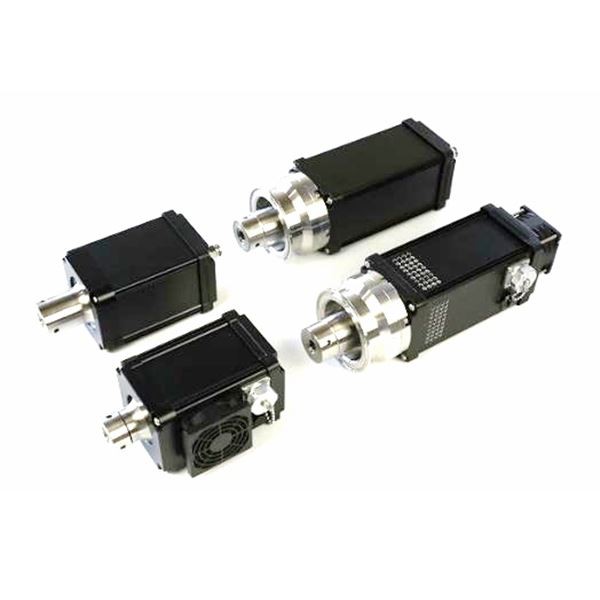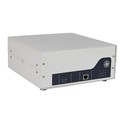Hey there! I'm a supplier of universal ultrasonic transducers, and today I'm gonna chat with you about how to control the output of these nifty devices. Universal ultrasonic transducers are pretty amazing pieces of tech. They've got a wide range of applications, from industrial cleaning to medical imaging. But getting the right output from them is crucial for their proper functioning.
First off, let's understand what we mean by the "output" of a universal ultrasonic transducer. The output typically refers to the ultrasonic waves it generates, which are characterized by factors like frequency, amplitude, and power. These factors can greatly affect how the transducer performs in different applications.
Controlling Frequency
Frequency is one of the most important aspects of an ultrasonic transducer's output. It determines the size of the objects the ultrasonic waves can interact with. For example, higher frequencies are better for detecting small particles or performing precise medical imaging, while lower frequencies are more suitable for larger - scale applications like industrial welding.
To control the frequency of a universal ultrasonic transducer, you can use a frequency generator. This device allows you to set the exact frequency at which the transducer will operate. Most modern frequency generators are quite user - friendly. You can usually just input the desired frequency value on a digital interface.
Another way to control frequency is through the use of feedback control systems. These systems monitor the actual frequency of the ultrasonic waves being produced by the transducer and adjust the input signal accordingly. This ensures that the transducer operates at the desired frequency even if there are external factors that could potentially cause frequency drift. For instance, changes in temperature can sometimes affect the frequency of the transducer. A feedback control system can compensate for these changes and keep the frequency stable.
Adjusting Amplitude
The amplitude of the ultrasonic waves is another key factor in controlling the output. Amplitude is related to the intensity or strength of the waves. In some applications, like ultrasonic cleaning, a higher amplitude can lead to more effective cleaning as it generates stronger cavitation bubbles.
One way to adjust the amplitude is by changing the input voltage to the transducer. Generally, increasing the input voltage will increase the amplitude of the ultrasonic waves. However, you need to be careful not to exceed the maximum voltage rating of the transducer, as this can damage it.
You can also use an amplifier to control the amplitude. An amplifier boosts the input signal, allowing you to increase the amplitude of the ultrasonic waves without having to directly increase the input voltage. There are different types of amplifiers available, and you should choose one that is compatible with your universal ultrasonic transducer.
Managing Power
Power is closely related to both frequency and amplitude. Controlling the power output of a universal ultrasonic transducer is important for ensuring that it operates efficiently and safely.

To manage the power, you can use a power supply with adjustable output. This allows you to set the amount of power that is supplied to the transducer. You need to consider the power requirements of your specific application when setting the power output. For example, in some medical applications, a lower power output might be sufficient to avoid any potential harm to the patient, while in industrial applications, a higher power output might be necessary for more effective processing.
Another approach is to use a power control circuit. This circuit can monitor the power consumption of the transducer and adjust the input signal to maintain a constant power output. This is useful for applications where a stable power level is crucial.
Other Factors Affecting Output
Apart from frequency, amplitude, and power, there are other factors that can affect the output of a universal ultrasonic transducer.
The load connected to the transducer can have a significant impact on its output. Different loads have different impedance characteristics, and if the impedance of the load is not properly matched to the transducer, it can lead to inefficient operation and reduced output. You can use impedance matching networks to ensure that the load and the transducer are well - matched. These networks can be adjusted to optimize the transfer of energy from the transducer to the load.
The temperature of the transducer also plays a role. As the temperature changes, the physical properties of the transducer materials can change, which in turn can affect the output. You can use temperature sensors and cooling systems to monitor and control the temperature of the transducer. For example, in high - power applications, a cooling system might be necessary to prevent the transducer from overheating.
Using Universal Ultrasonic Transducers in Different Applications
Now that we've talked about how to control the output, let's see how these techniques apply in different applications.
In industrial cleaning, you'll want to set a relatively high amplitude and power to generate strong cavitation bubbles that can remove dirt and contaminants from surfaces. You can choose a frequency that is appropriate for the size of the particles you're trying to remove. For example, if you're cleaning small - sized components, a higher frequency might be more effective.
In medical imaging, precision is key. You'll need to carefully control the frequency, amplitude, and power to get clear and accurate images. A feedback control system can be very useful here to ensure that the transducer operates at a stable frequency and amplitude.
In ultrasonic welding, you'll need to adjust the power and frequency to achieve the right amount of heat generation for joining the materials together. You also need to make sure that the load impedance is properly matched to ensure efficient energy transfer.
Conclusion
Controlling the output of a universal ultrasonic transducer is a multi - faceted process that involves managing frequency, amplitude, power, and other factors like load impedance and temperature. By using the right tools and techniques, such as frequency generators, amplifiers, power supplies, and feedback control systems, you can optimize the performance of the transducer for your specific application.
If you're interested in Ultrasonic Transducer, and want to learn more about how to control their output or have any other questions, I'd be more than happy to have a chat with you. Whether you're in the industrial, medical, or any other field that uses ultrasonic transducers, I can provide you with the information and products you need. So, don't hesitate to reach out and start a conversation about your purchasing needs. Let's work together to get the most out of these amazing devices!
References
- Smith, J. (2018). Ultrasonic Transducer Technology. Publisher Name.
- Johnson, A. (2020). Applications of Ultrasonic Transducers. Another Publisher.





